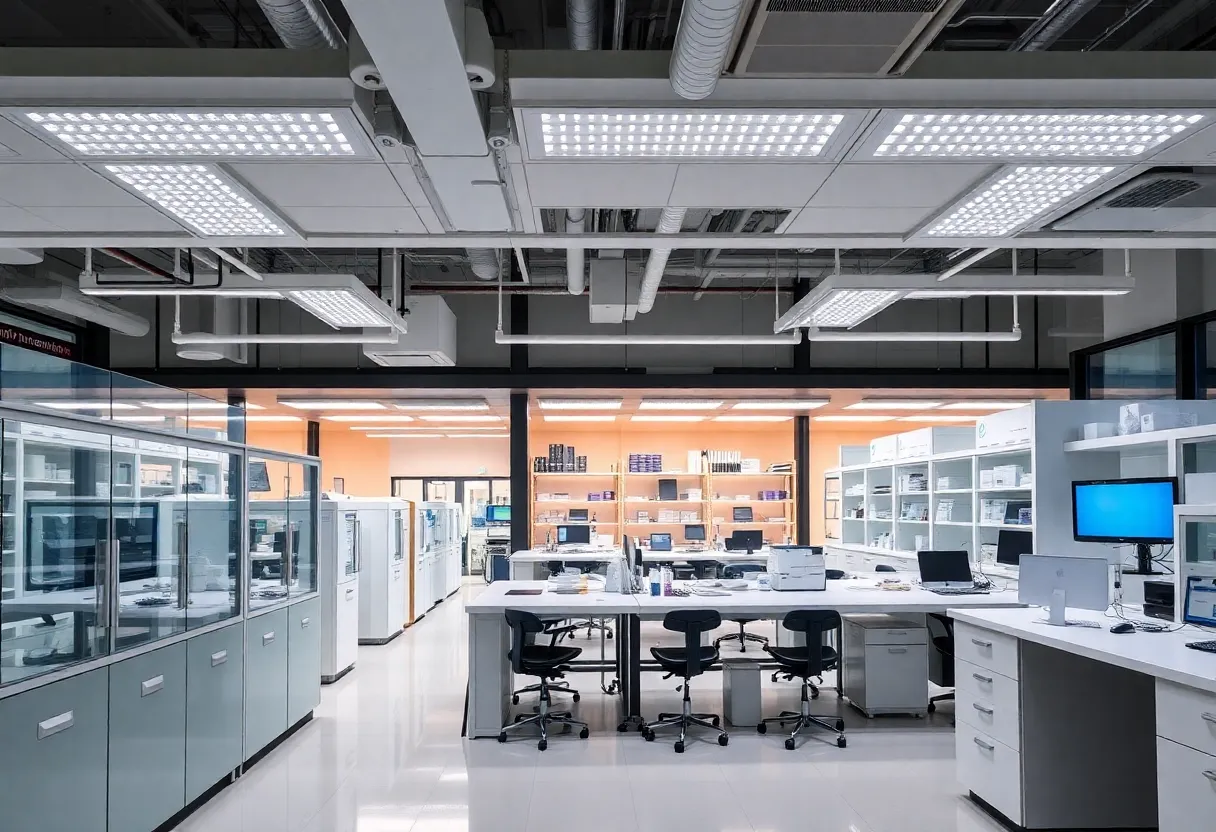News Summary
The Greater Boston life sciences sector is experiencing a significant shift as the lab vacancy rate reached 25%, up from nearly zero in 2022. This increase is mainly due to companies moving away from older lab spaces and favoring new, purpose-built facilities. Industry leaders noted this trend during Bisnow’s Boston Life Sciences Summit, revealing a surge in tenant opportunities for high-quality lab spaces. Despite the higher vacancy rates, the demand for purpose-built laboratory spaces continues to rise, reshaping the landscape of the market.
Boston is witnessing a significant shift in its life sciences market as the vacancy rate in the Greater Boston lab sector skyrocketed to 25% in the last quarter, up from nearly zero in 2022, according to data from CBRE. This surge in vacancies is largely attributed to companies abandoning older laboratory buildings and offices hastily converted into lab spaces during the pandemic, in preference for newly constructed, purpose-built lab environments.
The changing landscape has created a tenant-friendly market, highlighted during Bisnow’s Boston Life Sciences Summit, where industry leaders noted that established firms now have more opportunities to secure high-quality lab spaces. However, the overall vacancy rate may appear artificially inflated, primarily due to the high number of older brick-and-beam buildings that do not meet the sophisticated needs of modern lab tenants.
Recent developments indicate that demand for purpose-built laboratory spaces is increasing. For instance, Boston Global Investors has recently completed a 300,000-square-foot lab building at 10 World Trade Center, garnering considerable interest from larger, established firms. Over the past six months, tenant activity has risen notably at Boston Global Investors, contrasting sharply with the stagnant activity seen in the previous three years.
Companies are increasingly leaning toward purpose-built lab spaces as these structures provide specialized infrastructure that older or hastily converted office spaces lack. During the previous life sciences boom, many office buildings were repurposed into labs, leading to an oversupply in the market as demand has since decreased. Currently, around 90% of Boston’s life sciences market vacancy stems from these conversion projects.
Oxford Properties, during this boom period, decided against several conversion projects due to concerns about product quality, showcasing a growing awareness among developers regarding the suitability of spaces offered to tenants. King Street Properties has also observed rising tenant activity at its Allston Labworks development and plans to enhance its offerings to attract businesses relocating from less desirable Class-B buildings.
An example of the ongoing demand for quality lab spaces is shown by Prime Medicine, which recently signed a lease for 149,000 square feet in a former Sears building that was converted into a lab. This highlights the significant gap in quality between older converted lab spaces and newer, purpose-built facilities.
The potential for improvement in the overall real estate market might lead to the repurposing of some underutilized lab spaces for tech companies and other burgeoning sectors. Emerging fields such as clean technology and artificial intelligence are anticipated to alleviate the current oversupply by absorbing some vacant spaces, signaling a shift in tenant preferences and usage.
Looking ahead, Related Beal’s Leiden Center II is scheduled to become Boston’s first LEED Platinum and Zero Carbon building when completed in early 2027. This state-of-the-art life science development will not only contribute to Boston’s extensive life science capabilities but also supports vocational education through a partnership with the Gloucester Marine Genomics Institute. The project has made a commitment to minority and women-owned business participation, with over 50% of consultants representing these demographics, further emphasizing social responsibility within the industry.
In summary, the Greater Boston life sciences market is evolving rapidly as companies vacate unsuitable lab spaces in pursuit of purpose-built environments. Despite the temporary rise in vacancy rates, the ongoing developments and burgeoning tenant activity illustrate a robust shift that may reshape the industry in the region.
Deeper Dive: News & Info About This Topic
HERE Resources
Bulfinch Cos. Proposes Mixed-Use Development in Needham
Boston Prepares for Annual Biotechnology Industry Trade Show
Significant Funding Cuts Threaten U.S. Biotech Job Market
Massachusetts Enacts Mass Leads Act to Boost Life Sciences
Suzanne Roeder Appointed CFO of Bond Brothers
Boston Life-Science Real Estate Market Faces Rising Vacancies
Boston Lab Market Faces High Vacancy Rates Amid Development
Four Massachusetts Cities Among Best Places to Live in U.S.
Massachusetts Biotechnology Sector Faces Challenges from Proposed Tariffs
Trump Administration’s Policies Threaten Massachusetts Economy
Additional Resources
- Bisnow: Life Sciences Tenants Flock to Boston Class A Space
- GlobeSt: Boston’s Life Sciences Sector Faces Challenges
- Boston Real Estate Times: Related Beal Celebrates Topping Out
- Wikipedia: Life Sciences
- CoStar: Starwood Buys Boston Property
- Encyclopedia Britannica: Life Sciences

Author: STAFF HERE BOSTON WRITER
The BOSTON STAFF WRITER represents the experienced team at HEREBoston.com, your go-to source for actionable local news and information in Boston, Suffolk County, and beyond. Specializing in "news you can use," we cover essential topics like product reviews for personal and business needs, local business directories, politics, real estate trends, neighborhood insights, and state news affecting the area—with deep expertise drawn from years of dedicated reporting and strong community input, including local press releases and business updates. We deliver top reporting on high-value events such as Boston Marathon, Head of the Charles Regatta, and Boston Harborfest. Our coverage extends to key organizations like the Greater Boston Chamber of Commerce and Associated Industries of Massachusetts, plus leading businesses in finance, biotech, and insurance that power the local economy such as Fidelity Investments, Biogen, and Liberty Mutual Insurance. As part of the broader HERE network, we provide comprehensive, credible insights into Massachusetts's dynamic landscape.





